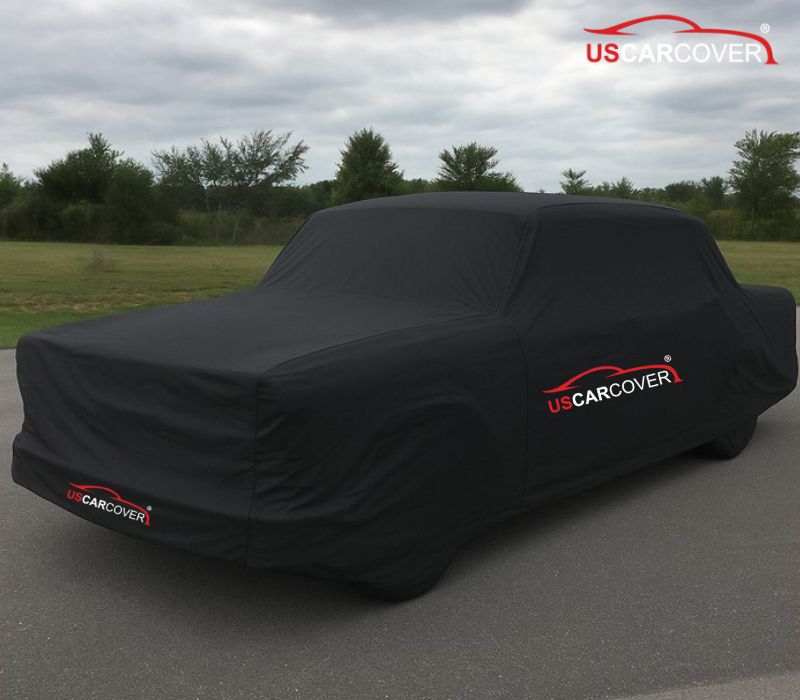
Checker car cover is the practical way to fight humidity-driven problems before they take hold. In the humid regions of the United States, from Florida and the Gulf Coast to the cool, damp Pacific Northwest, moisture lingers on vehicles after rain, overnight dew, and sudden temperature swings. Many owners have opened a door after a wet week to a cool cabin, a musty smell, and a faint film on glass and trim. That is the telltale sign that mold has started to colonize surfaces because moisture was trapped for too long. According to the U.S. Environmental Protection Agency, mold thrives anywhere humidity persists. The odor is unpleasant, and for sensitive people it can also irritate airways and eyes. Investing in a quality car cover that manages moisture is one of the simplest, most effective ways to keep your car dry and fresh.
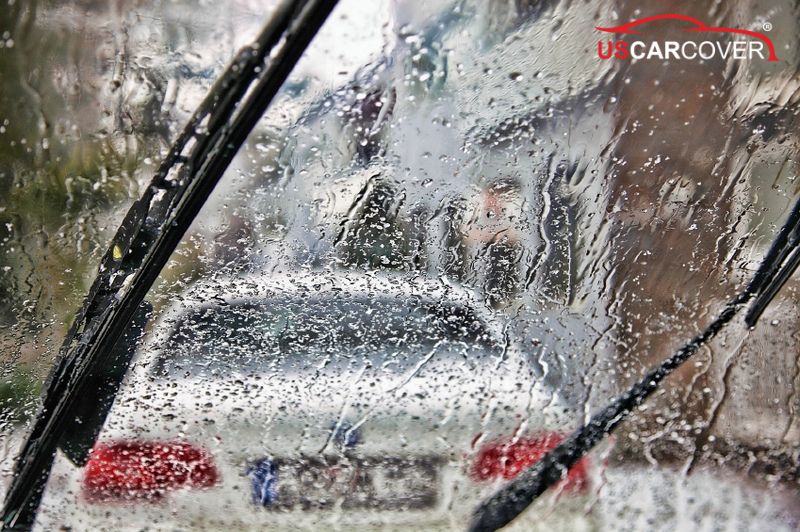
Related Articles: Cadillac car cover: protect against dust and sand, tree sap, and animals, keep scratches away
Mold and musty odor: the number-one enemy inside your Checker
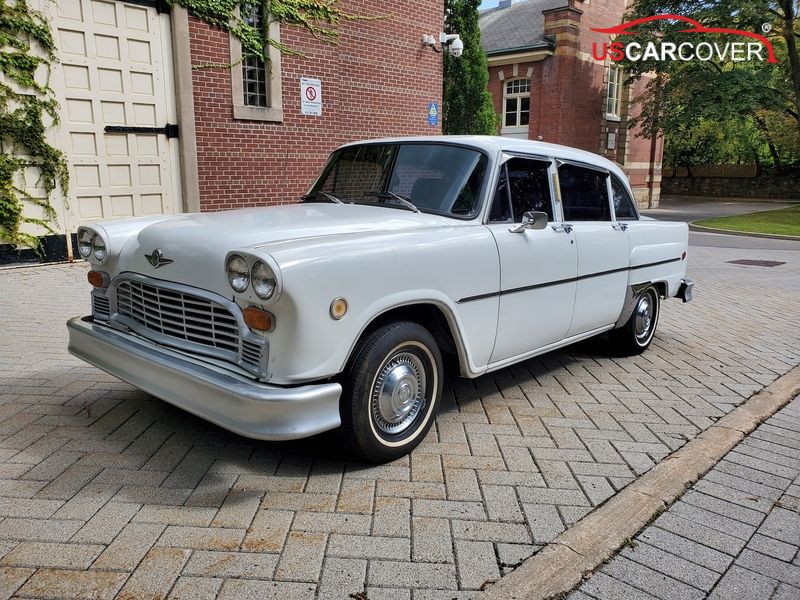
A car parked outdoors or in a damp garage can quickly develop mold and a musty smell. The root cause is moisture that gets trapped in seat seams, carpets, headliners, and the micro-texture of trim. As mold grows, it releases volatile compounds that smell stale and earthy. That “old basement” odor is a clear warning that spores are active. Beyond the smell, mold can stain leather, yellow headliners, and leave stubborn residue on vinyl and plastics. Getting rid of established mold is difficult: you must remove the source of dampness, clean hidden areas, and ventilate thoroughly. Preventing moisture from lingering is far easier than remediation, which is why choosing the right car cover and using it correctly matters.
Related Articles: Buick car cover: Prevent snow and ice buildup and minimize small hail damage
Why use a cover in humid conditions

It is easy to assume “a car in the garage is safe,” but a closed, poorly ventilated garage can be as humid as a rainy driveway. A purpose-built uscarcover helps in two ways. First, it shields the vehicle from direct rain and nighttime dew, reducing the liquid water that needs to evaporate. Second, the right fabrics allow water vapor to escape instead of trapping it against the paint and glass. That combination reduces the chances of rust, mold, and lingering odor. Even indoors, a cover cuts down dust and airborne moisture settling on surfaces. Used consistently, it protects leather, carpets, sound-deadening foams, and electrical connectors from damp-related wear and faults, which preserves value and avoids repair bills.
Related Articles: Bugatti car cover: Protection for Event Days and When Transporting by Trailer
Checker Car Cover: a comprehensive solution against damp and mold
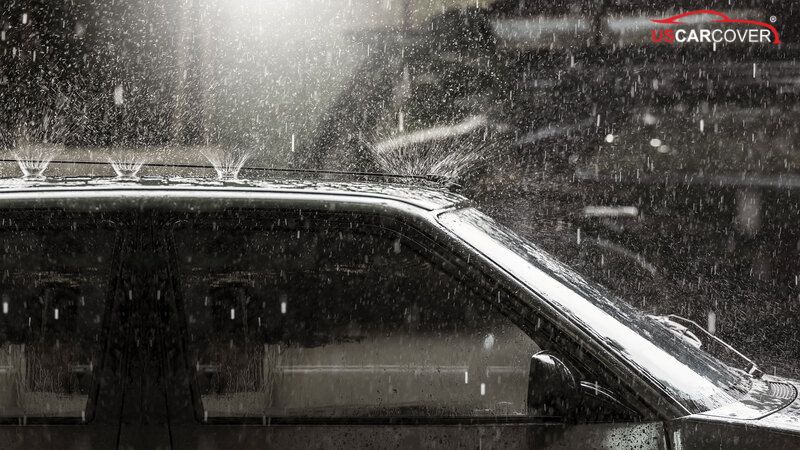
Checker car cover focuses on moisture management, not just blocking rain. The outer shell resists precipitation so liquid water does not soak to the surface below. Equally important, the multi-layer construction is breathable, letting water vapor migrate outward so humidity does not build under the cover. That is the key to cutting off mold before it starts. Materials are chosen to dry quickly after a shower or foggy night, so the fabric itself does not stay wet. Quick-dry behavior means the cover sheds water and returns to a neutral state fast, rather than holding dampness and creating a cool, moist microclimate that mold loves. A soft inner liner protects finishes when you install and remove the cover, and model-appropriate sizing helps the cover sit smoothly without gaps or puddling.
Related Articles: Bricklin Car Covers: Effective UV Protection to Preserve Acrylic Paint and Gelcoat Finish
Standout features of Checker Car Cover
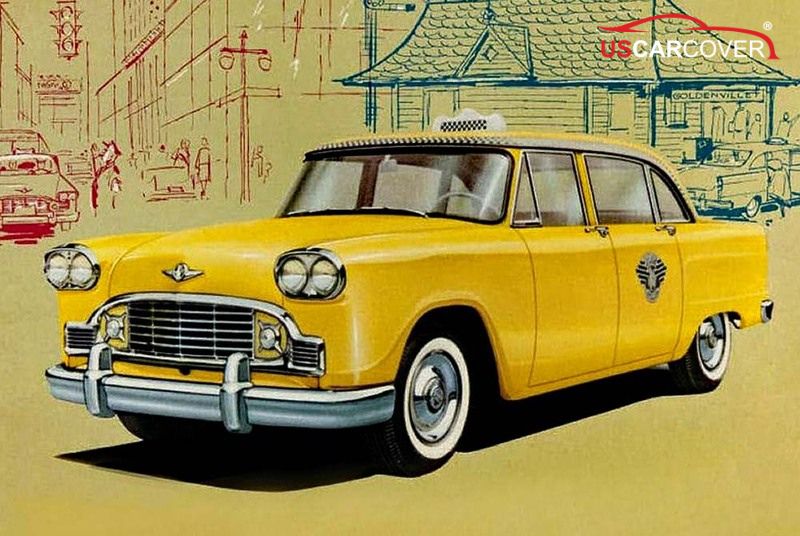
Water resistant yet breathable. Liquids stay out, while water vapor can vent out. This reduces condensation under the cover after cool nights and warm afternoons and helps the area beneath return to dry more quickly.
Quick-dry materials that do not hold moisture. Fabrics are engineered to shed water and air-dry fast. By not staying wet, the cover denies mold the extended damp window it needs to take hold.
Mold and odor control. By preventing moisture buildup and encouraging evaporation, the cover interrupts the conditions that produce musty smells. Some fabrics also include mild antimicrobial properties in the weave to further limit growth on the fabric itself.
UV and dust protection. While the priority is humidity control, the outer shell also helps reduce sun fade and keeps airborne grime, pollen, and bird residue off surfaces so you do not have to wipe the paint as often.
Fits a wide range of vehicles. Whether you care for a classic Checker Marathon or a preserved taxi-era special, patterns and sizes cover sedans, wagons, and long-wheelbase variants. The result is consistent moisture control across diverse body styles and storage scenarios.
Related Articles: Bristol car cover: Reduce interior temperature swings, limit veneer cracking and aging weatherstrips
How to use Checker Car Cover effectively

Get the most out of your cover by pairing the right material with good habits:
- Prep the car before covering. Rinse off grit and let surfaces air-dry. Covering a wet car traps liquid; covering a clean, dry car allows the fabric to do its job of blocking new moisture and venting vapor.
- Install with a top-down approach. Lay the cover from the roofline, guide it over mirrors and pillars, and seat the hem all around. Use gentle underbody straps so wind does not billow the fabric and create pockets where water could pool.
- Check seal and airflow. Walk around once to smooth ripples and make sure there are no gaps or sagging sections. A smooth fit helps water run off and improves vapor transfer through the fabric.
- Remove and dry smartly. When you uncover the car, avoid dragging the inner liner on the ground. If the cover is damp, hang it for a few minutes to air-dry before folding. Quick-dry textiles make this fast and easy.
- Clean and store properly. Wash with a mild detergent as directed, then air-dry fully. Store in a breathable bag so the fabric stays fresh and ready for the next use.
Related Articles: Austin-Healey Car Cover: Lightweight, UV resistant and durable
Long-term benefits of using Checker Car Cover
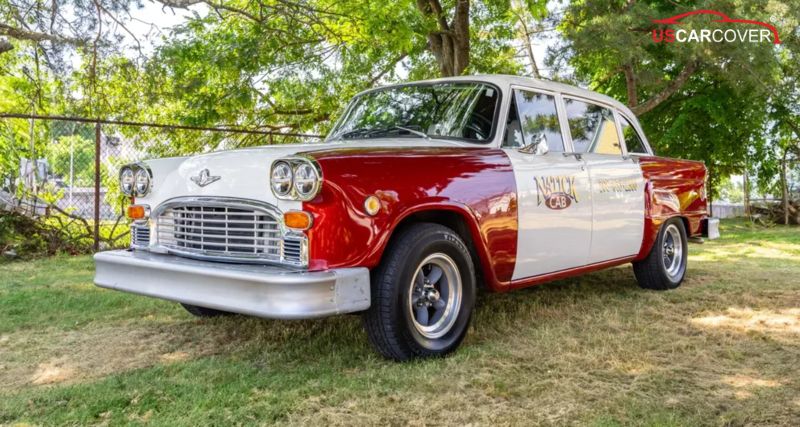
Preserves value. A car that smells clean and shows no damp staining on leather, carpet, or trim commands a better price and delivers a better ownership experience.
Lowers maintenance costs. Preventing moisture keeps you away from mold remediation, leather recoloring, headliner replacement, and electrical gremlin hunting caused by damp connectors.
Improves health and comfort. A dry, neutral-smelling cabin is a joy to step into and kinder to passengers with sensitivities.
Saves time. Less wiping after fog, less airing-out after rain, and fewer deep-clean cycles mean more time enjoying the drive.
Sustainable protection. Durable, quick-dry fabrics and proper care make one purchase work for years, across seasons and storage locations.
Related Articles: Bentley car cover: luxury, quality, finesse even while the car is covered
Humid U.S. climates where Checker Car Cover excels

What makes this approach practical is how it adapts to different humid regions:
Florida and the Gulf Coast. Frequent downpours and tropical humidity mean overnight dew and afternoon showers are routine. A water-resistant, breathable, quick-dry cover keeps the cycle from turning into cabin dampness.
New England and the Mid-Atlantic. Cool, wet winters and shoulder seasons bring condensation swings. Breathability prevents vapor from condensing under the cover as temperatures fluctuate.
Pacific Northwest. Persistent light rain and mist require true water resistance with real vapor permeability. Seams should be well finished so wind-driven rain does not wick through stitching.
Humid pockets nationwide. River valleys, coastal towns, and tree-lined neighborhoods all hold moisture longer than open high plains. A cover that dries fast and does not trap humidity pays off in each scenario.
Wherever you store your Checker, the principle is consistent: block liquid water, vent vapor, dry fast, and protect surfaces with a soft inner face.
Related Articles: Avanti car cover: Will an anti static lining that reduces dust buildup keep the finish glossier in dusty winds and coastal climates
Q&A
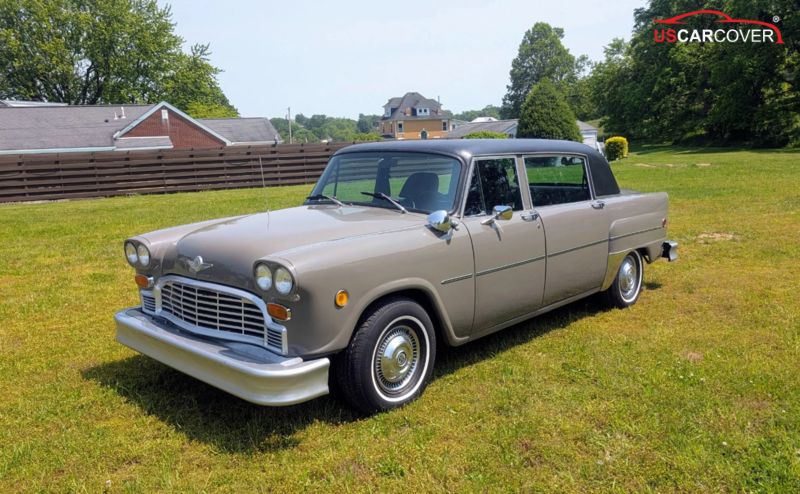
How do I know if my current cover is trapping moisture?
-If you notice condensation on glass when you uncover, a persistent musty smell, or damp touch on seats or carpets, your cover may not be venting vapor well or it is staying wet too long.
What fabric qualities should I prioritize for humid climates?
-Look for a water-resistant outer shell, true breathability to vent vapor, a soft inner liner, and quick-dry behavior so the cover itself does not remain damp
Can I cover the car right after washing or rain?
-Wait until surface water has dripped off and the car feels dry to the touch. Covering a wet car traps liquid and encourages mold
How often should I air out the car under a cover?
-In very humid stretches, uncover and air the cabin every few days. A five to ten minute airing helps drive out humidity spikes
How do I clean a musty smell that has already started?
-Remove the cover, air the car in a dry, shaded place, wipe hard surfaces with a mild interior-safe cleaner, and run gentle ventilation. Ensure the cover is fully dry before reuse.
Will a breathable cover still protect against rain?
-Yes. The idea is to block liquid water while allowing water vapor to escape. Quality breathable covers do both.
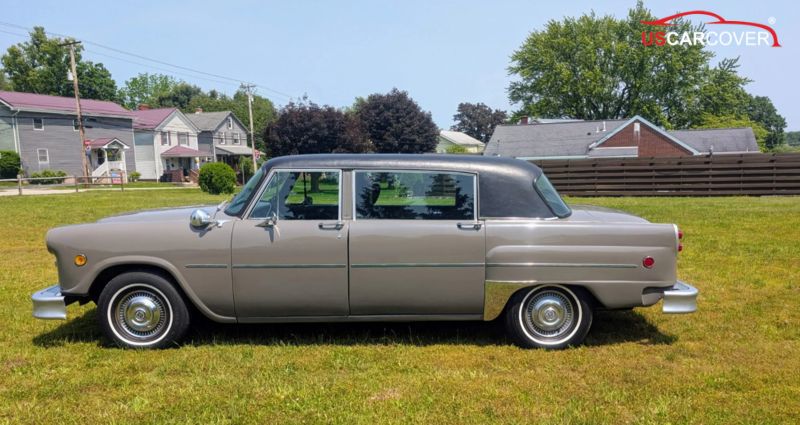
Persistent humidity is the spark that lights the mold-and-odor fuse. Stopping that cycle is simpler than it seems. With a breathable, water-resistant, quick-dry car cover sized for your Checker, you keep liquid out, let vapor escape, and cut the time any fabric stays wet. The result is a cabin that smells clean, materials that age gracefully, and a vehicle that is always ready without extra cleanup. Make moisture management part of your routine, and you will enjoy a fresher drive in every humid season
